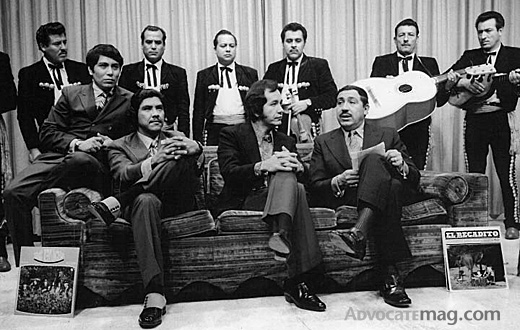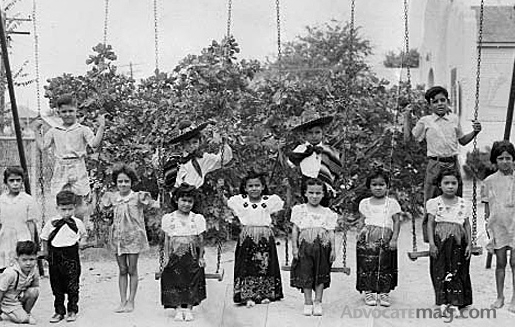This Lakewood resident authored a book on his original neighborhood

Trini Lopez was a boy from the barrio of Little Mexico when he broke into the national music business in the 1950s. He went on to star in several movies and enjoyed a successful recording career. Here Lopez is seated in the center of the sofa during a break of Johnny Gonzales’s TV show in about 1959. PHOTO COURTESY OF THE DALLAS MEXICAN AMERICAN HISTORICAL LEAGUE
“The railroads first brought Mexican workers into Dallas’s Little Mexico in the 1870s, and, ironically, it was the Tollway that killed the community in the ’60s,” Sol Villasana says of the neighborhood in which he was raised and the subject of his new book, “Dallas’s Little Mexico.”
A Lakewood resident, attorney and the former chair of the Hispanic advisory committee of Dallas ISD, Villasana was approached by a friend to assist Arcadia Press with the creation of “Dallas’s Little Mexico” because of his ties to the area that today encompasses Victory Park.
“My family had a grocery store and a filling station in Little Mexico,” Villasana says. “It is the birthplace of El Fenix, El Chico, Dallas Tortilla & Tamale Factory and Luna’s Tortillas. Little Mexico definitely boomed in the 1920s and ’30s, but it was still thriving in the ’50s.”
The neighborhood, Villasana remembers, had a very active local swimming pool and abundant garden club competitions. (He says you can still see these gardens today, blooming up from empty plots).
“But don’t get me wrong, there was a negative industrial aspect,” Villasana says. “People were injured on the railroad, and the community was located near the city dump, a coal-burning generating plant and a slaughter house.” The area’s legends stand out to Villasana.
“There was the ghost story of the lady in white who haunted the rec center’s field house at Pike Park,” he says. “But the best were all of the treasure stories.”
According to Villasana, before the neighborhood was Little Mexico, it was a Jewish community known as Little Jerusalem, and legend had it that the people of the community would bury their valuables. So as Little Mexico was built, people expected to dig up cash, he says.
Villasana says Little Mexico’s demise began after WWII.

While the Mexican Presbyterian Church in Dallas started its work in the Little Mexico area as early as 1912, it was not until 1923 that it secured a property at 1803 Payne Street, near Akard. The two-story structure had been the Presbyterian Settlement House. The church was known as El Divino Salvador Presbyterian Church. Its first minister was Elias S. Rodriguez. This photograph from 1939 shows the church’s playground, attached to its school, and kindergarten children. The large fig tree in the background was a source of treats for the children. PHOTO COURTESY OF EL DIVINO SALVADOR PRESBYTERIAN CHURCH
“After the war, returning GIs had the opportunity to buy bigger homes because of the GI Bill, and the community started breaking up,” he says. “There was a change in the psyche of the Mexican people, too … These were second- and third-generation Americans who no longer needed a tight-knit, Spanish-speaking community to survive.”
According to Villasana, the final blow was the North Dallas Tollway, which dissected the area in the 1960s. This killed the mom and pop stores, and developers turned it into the entertainment district it is today.
Villasana hopes to write more on the topic of Little Mexico.
“There are many stories to tell,” he says.
“Dallas’s Little Mexico” is available at arcadiapublishing.com for $21.99.





